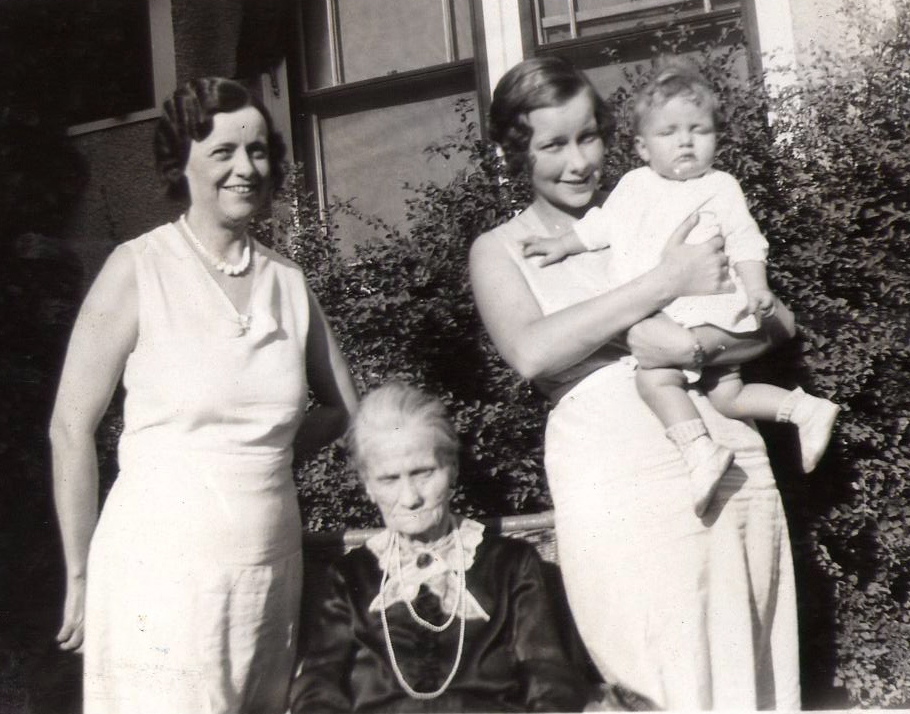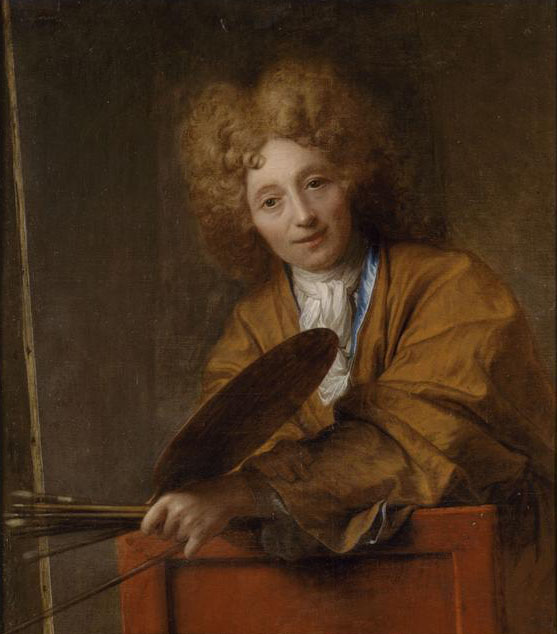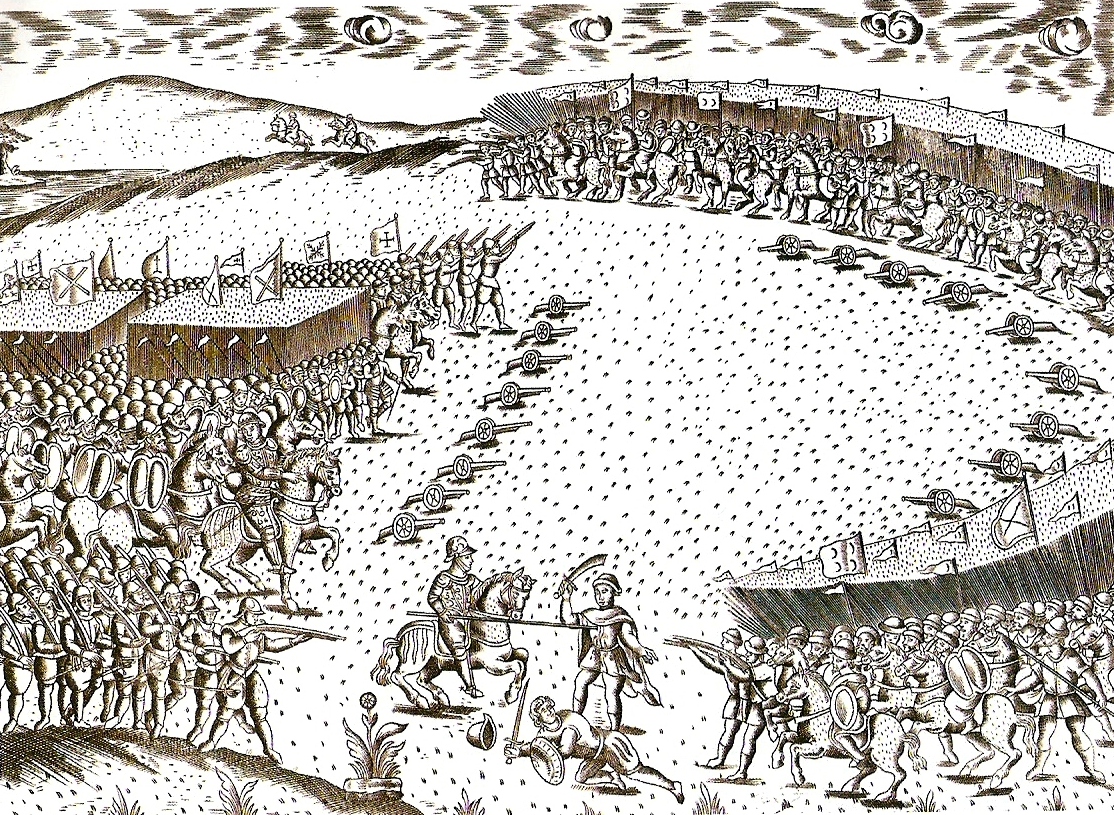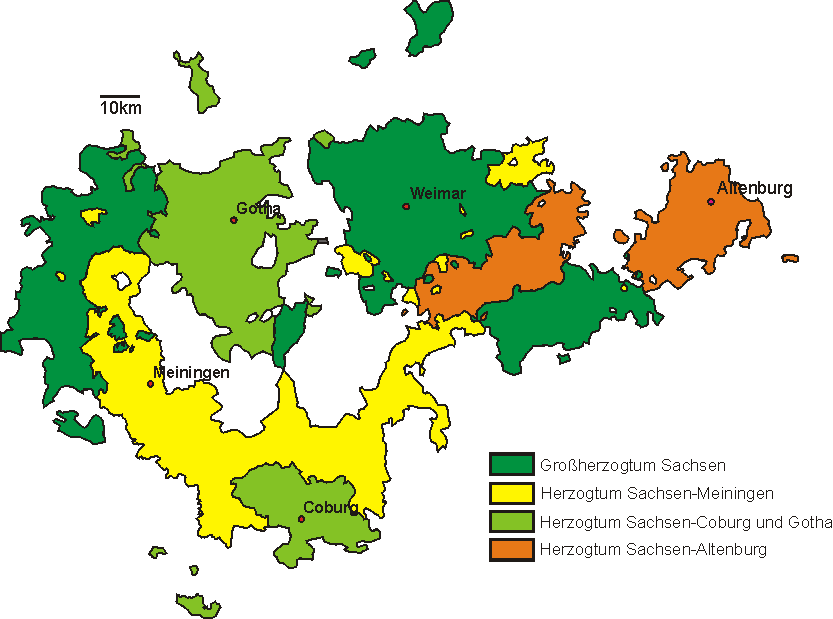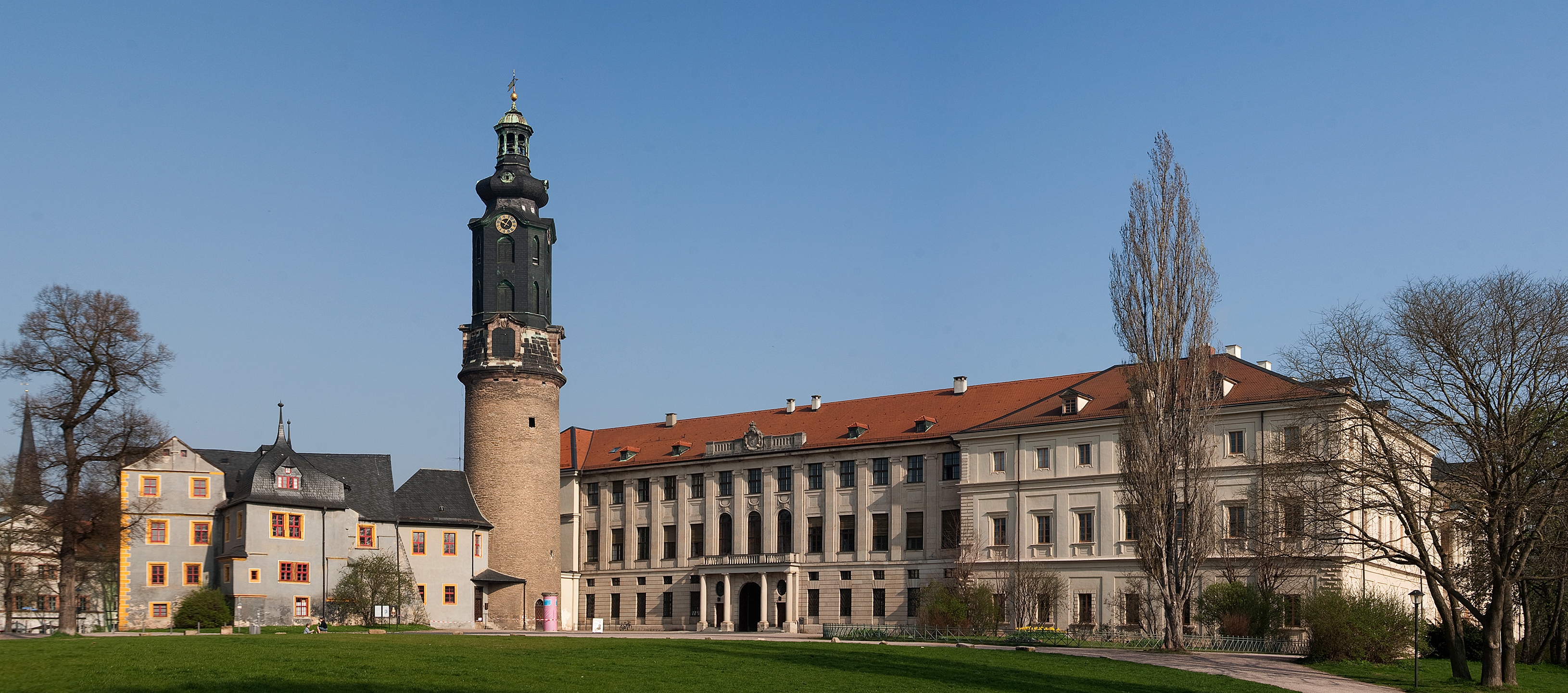|
Christine Of Hesse-Kassel (1578–1658)
Christine of Hesse-Kassel (19 October 1578 – 19 August 1658) was a German noblewoman member of the House of Hesse and by marriage Duchess of Saxe-Eisenach and Saxe-Coburg. Born in Kassel, she was the tenth of eleven children born from the marriage of William IV, Landgrave of Hesse-Kassel and his wife Duchess Sabine of Württemberg. She was probably named after both her paternal grandmother and aunt (by marriage Duchess consort of Schleswig-Holstein-Gottorp). Life In Rotenburg an der Fulda on 14 May 1598, Christine married John Ernest, Duke of Saxe-Eisenach as his second wife. On the occasion of the marriage Jacob Thysius wrote a special ''Epithalamium''. Since her father had died in 1592, was her older brother Maurice, Landgrave of Hesse-Kassel, who took care of her ''trousseau''. The dowry was retained until her ''Wittum'' (widow's seat) was negotiated. In the marriage contract was stipulated, in addition to her paternal, maternal and fraternal inheritance, an income from he ... [...More Info...] [...Related Items...] OR: [Wikipedia] [Google] [Baidu] |
List Of Saxon Consorts
This is a list of the Duchesses, Electresses and Queens of Saxony; the consorts of the Duke of Saxony and its successor states; including the Electorate of Saxony, the Kingdom of Saxony, the House of Ascania, Albertine, and the Ernestine duchies, Ernestine Saxony. Ducal Saxony Duchess of Duchy of Saxony, Saxony * ? – 800: Geva of Westfold, wife of Widukind, daughter of the Danish king Goimo I and sister of the Danish kings Ragnar Lodbrok, Ragnar and Siegfried, d. a. 800 Ascanian Ducal Saxony Duchess of Saxe-Lauenburg Duchess of Saxe-Wittenberg Saxe-Meißen, incorporating Saxe-Wittenberg in 1547 Saxe-Thuringia, including Saxe-Wittenberg until 1547 Electorate of Saxony Electress of Saxony :''See: Electress#Electresses of Saxony, Electresses of Saxony.'' Albertine Ducal Saxony Duchess of Saxe-Weissenfels Duchess of Saxe-Merseburg Duchess of Saxe-Zeitz Ernestine Saxony Duchess of Saxe-Weimar Duchess of Saxe-Coburg-Eisenach ... [...More Info...] [...Related Items...] OR: [Wikipedia] [Google] [Baidu] |
Calvinist
Reformed Christianity, also called Calvinism, is a major branch of Protestantism that began during the 16th-century Protestant Reformation. In the modern day, it is largely represented by the Continental Reformed Protestantism, Continental Reformed Christian, Presbyterianism, Presbyterian, Congregationalism, Congregational, and Waldensians traditions, as well as parts of the Calvinistic Methodist, Methodist, Reformed Anglican Church, Anglican (known as "Episcopal" in some regions) and Reformed Baptists, Baptist traditions. Reformed theology emphasizes the Biblical authority, authority of the Bible and the Sovereignty of God in Christianity, sovereignty of God, as well as covenant theology, a framework for understanding the Bible based on God's covenants with people. Reformed churches emphasize simplicity in worship. Several forms of ecclesiastical polity are exercised by Reformed churches, including presbyterian polity, presbyterian, Congregational polity, congregational, ... [...More Info...] [...Related Items...] OR: [Wikipedia] [Google] [Baidu] |
Daughters Of Monarchs
A daughter is a female offspring; a girl or a woman in relation to her parents. Daughterhood is the state, condition or quality of being someone's daughter. The male counterpart is a son. Analogously the name is used in several areas to show relations between groups or elements. From biological perspective, a daughter is a first degree relative. The word daughter also has several other connotations attached to it, one of these being used in reference to a female descendant or consanguinity. It can also be used as a term of endearment coming from an elder. In patriarchal societies, daughters often have different or lesser familial rights than sons. A family may prefer to have sons rather than daughters and subject daughters to female infanticide. In some societies, it is the custom for a daughter to be 'sold' to her husband, who must pay a bride price. The reverse of this custom, where the parents pay the husband a sum of money to compensate for the financial burden of the woma ... [...More Info...] [...Related Items...] OR: [Wikipedia] [Google] [Baidu] |
Duchesses Of Saxe-Eisenach
Duke is a male title either of a monarch ruling over a duchy, or of a member of royalty, or nobility. As rulers, dukes are ranked below emperors, kings, grand princes, grand dukes, and above sovereign princes. As royalty or nobility, they are ranked below grand dukes and above or below princes, depending on the country or specific title. The title comes from French ''duc'', itself from the Latin ''dux'', 'leader', a term used in republican Rome to refer to a military commander without an official rank (particularly one of Germanic or Celtic origin), and later coming to mean the leading military commander of a province. In most countries, the word ''duchess'' is the female equivalent. Following the reforms of the emperor Diocletian (which separated the civilian and military administrations of the Roman provinces), a ''dux'' became the military commander in each province. The title ''dux'', Hellenised to ''doux'', survived in the Eastern Roman Empire where it continued in seve ... [...More Info...] [...Related Items...] OR: [Wikipedia] [Google] [Baidu] |
17th-century German People
The 17th century lasted from January 1, 1601 (represented by the Roman numerals MDCI), to December 31, 1700 (MDCC). It falls into the early modern period of Europe and in that continent (whose impact on the world was increasing) was characterized by the Baroque cultural movement, the latter part of the Spanish Golden Age, the Dutch Golden Age, the French ''Grand Siècle'' dominated by Louis XIV, the Scientific Revolution, the world's first public company and megacorporation known as the Dutch East India Company, and according to some historians, the General Crisis. From the mid-17th century, European politics were increasingly dominated by the Kingdom of France of Louis XIV, where royal power was solidified domestically in the civil war of the Fronde. The semi-feudal territorial French nobility was weakened and subjugated to the power of an absolute monarchy through the reinvention of the Palace of Versailles from a hunting lodge to a gilded prison, in which a greatly expanded ro ... [...More Info...] [...Related Items...] OR: [Wikipedia] [Google] [Baidu] |
1658 Deaths
Events January–March * January 13 – Edward Sexby, who had plotted against Oliver Cromwell, dies in the Tower of London. * January 30 – The "March Across the Belts" (''Tåget över Bält''), Sweden's use of winter weather to send troops across the waters of the Danish straits at a time when winter has turned them to ice, begins. Within 17 days, Sweden's King Karl X Gustav leads troops across the ice belts to capture six of Denmark's islands as Swedish territory. * February 5 – Prince Muhi al-Din Muhammad, one of the sons of India's Mughal, Emperor Shah Jahan, proclaims himself Emperor after Jahan names Muhi's older brother, Dara Shikoh, as regent, and departs from Aurangabad with troops. * February 6 – Swedish troops of Charles X Gustav of Sweden March Across the Belts, cross The Great Belt in Denmark, over frozen sea. * March 8 (February 26 Old Style and New Style dates, OS) – The peace between Sweden and Denmark-Norway is concluded i ... [...More Info...] [...Related Items...] OR: [Wikipedia] [Google] [Baidu] |
1578 Births
__NOTOC__ 1578 ( MDLXXVIII) was a common year starting on Wednesday in the Julian calendar. Events January–March * January 13 – The Siege of Gvozdansko ends in the Kingdom of Croatia as Ottoman Empire troops led by Ferhad Pasha Sokolović capture the fortress at Gvozdansko. * January 31 – Battle of Gembloux: Spanish forces under Don John of Austria and Alexander Farnese defeat the Dutch; Farnese begins to recover control of the French-speaking Southern Netherlands. * February 6 – Pope Gregory XIII issues the papal bull ''Illius fulti praesidio'' and creates the Diocese of Manila, the first Roman Catholic diocese in the Philippines, with Domingo de Salazar as the first Bishop of Manila. The diocese will be raised to the status of archdiocese on August 14, 1595. * February 8 – The city council of Amsterdam in the Netherlands ratifies a treaty placing the city under the authority of Willem, Prince of Orange, and joining the States of Ho ... [...More Info...] [...Related Items...] OR: [Wikipedia] [Google] [Baidu] |
House Of Wettin
The House of Wettin () was a dynasty which included Saxon monarch, kings, Prince Elector, prince-electors, dukes, and counts, who once ruled territories in the present-day German federated states of Saxony, Saxony-Anhalt and Thuringia. The dynasty is one of the oldest in Europe, and its origins can be traced back to the town of Wettin, Saxony-Anhalt. The Wettins gradually rose to power within the Holy Roman Empire. Members of the family became the rulers of several Middle Ages, medieval states, starting with the Saxon Eastern March in 1030. Other states they gained were Meissen in 1089, Thuringia in 1263, and Saxony in 1423. These areas cover large parts of Central Germany (cultural area), Central Germany as a cultural area of Germany. The family divided into two ruling branches in 1485 by the Treaty of Leipzig: the Ernestine and Albertine branches. The older Ernestine branch played a key role during the Protestant Reformation. Many ruling monarchs outside Germany were later tied ... [...More Info...] [...Related Items...] OR: [Wikipedia] [Google] [Baidu] |
Margaret Of Brunswick-Lüneburg
Margaret of Brunswick-Lüneburg (6 April 1573 7 August 1643), was a German member of the House of Welf and the Duchess of Saxe-Coburg by marriage. Born in Celle, she was the ninth of fifteen children born from the marriage of William the Younger, Duke of Brunswick-Lüneburg and Dorothea, Princess of Denmark. Life Margaret married John Casamir, Duke of Saxe-Coburg in Coburg on 16 September 1599, becoming his second wife. Most of the wedding guests stayed before and during the marriage festivities at Heldburg Castle. Gilded state coaches, which were originally part of her mother's dowry, were used for the occasion; they are one of the oldest still functioning coaches in the world and currently displayed at the Veste Coburg. John Casimir celebrated his marriage with the famous ''Coburg Taler'': on the obverse showed a kissing couple with the inscription WIE KVSSEN SICH DIE ZWEY SO FEIN (''A well kiss between two''), while on the reverse, showed a nun with the inscription: WER ... [...More Info...] [...Related Items...] OR: [Wikipedia] [Google] [Baidu] |
Saxe-Altenburg
Saxe-Altenburg () was one of the Saxon duchies held by the Ernestine branch of the House of Wettin in present-day Thuringia. It was one of the smallest of the German states with an area of 1323 square kilometers and a population of 207,000 (1905) of whom about one fifth resided in the capital, Altenburg. The territory of the duchy consisted of two non-contiguous territories separated by land belonging to the Principality of Reuss-Gera. Its economy was based on agriculture, forestry, and small industry. The state had a constitutional monarchical form of government with a parliament composed of thirty members chosen by male taxpayers over 25 years of age. Territory Saxe-Altenburg had an area of 1,323 km2 (510 sq. mi.) and a population of 207,000 in 1905. Its capital was Altenburg. The duchy consisted of two separate areas: the Ostkreis, containing the cities of Altenburg, Schmölln, Gößnitz, Lucka und Meuselwitz (including the exclave of Mumsdorf), Roschütz, Hilbe ... [...More Info...] [...Related Items...] OR: [Wikipedia] [Google] [Baidu] |
Saxe-Weimar
Saxe-Weimar () was one of the Saxon duchies held by the Ernestine branch of the Wettin dynasty in present-day Thuringia. The chief town and capital was Weimar. The Weimar branch was the most genealogically senior extant branch of the House of Wettin. History Division of Leipzig In the late 15th century much of what is now Thuringia, including the area around Weimar, was held by the Wettin Electors of Saxony. According to the 1485 Treaty of Leipzig, the Wettin lands had been divided between Elector Ernest of Saxony and his younger brother Albert III, with the western lands in Thuringia together with the electoral dignity going to the Ernestine branch of the family. Ernest's grandson Elector John Frederick I of Saxony forfeited the electoral dignity in the 1547 Capitulation of Wittenberg, after he had joined the revolt of the Lutheran Schmalkaldic League against the Habsburg emperor Charles V, was defeated, captured and banned. Nevertheless, according to the 1552 Pe ... [...More Info...] [...Related Items...] OR: [Wikipedia] [Google] [Baidu] |
Ear Trumpet
An ear trumpet is a tubular or funnel-shaped device which collects sound waves and leads them into the ear. They are used as hearing aids, resulting in a strengthening of the sound energy impact to the eardrum and thus improved hearing for a deaf or hard-of-hearing individual. Ear trumpets were made of sheet metal, silver, wood, snail shells or animal horns. They have largely been replaced in wealthier areas of the world by modern hearing aid technology that is much smaller and less obtrusive, albeit more expensive. A sound trumpet does not "amplify" sound. It takes the sound power received over a large area and concentrates it into a smaller area. The received sound is louder, but no power has been created in the process. History The use of ear trumpets for the partially deaf dates back to the 17th century.Howard, Alexander. "Hearing Aids: Smaller and Smarter." New York Times, November 26, 1998. The earliest description of an ear trumpet was given by the French Jesuit priest an ... [...More Info...] [...Related Items...] OR: [Wikipedia] [Google] [Baidu] |


